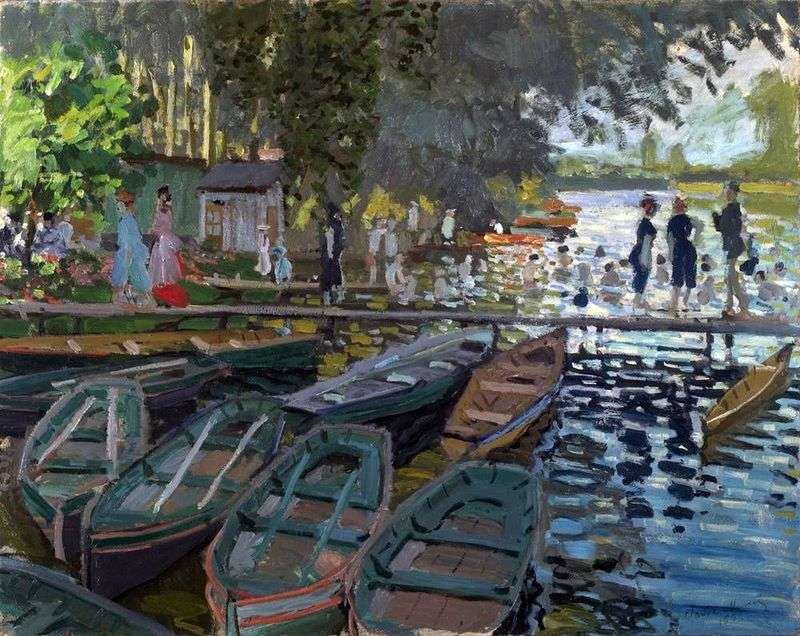
The Frogger was a water café, located on a pontoon moored to the banks of the Seine, which stood in a small bay of the river and connected to the island by a transitional bridge that was thrown over a tiny island, which some called the “flower pot”, and others – the Camembert. A charming corner, with the atmosphere of carelessness and happiness that habitually reigned here during the Second Empire, is described in detail by both the Goncourt brothers, Zola and Maupassant. The latter was particularly liked the cheerful atmosphere of the Frogdog.
In the novel “The Wife of the Field”, which was released simultaneously with the “Institution of Telye”, “a whole flotilla of skiffs, single-handed racing boats, kayaks, boats, of various shapes and materials, which slid along the fixed surface, collided, touched each other, clung with oars, they suddenly stopped from a powerful hold and dispersed from the thrust of the sinewy hands and sped along the waves, resembling yellow and red fish. ” “Frog” earned this nickname by the fact that pretty girls of easy behavior, so-called “frogs”, gathered here with a large number, who came here accompanied by small hooligans and rogues from the outskirts. Sometimes they came alone, hoping to catch a client, for bait using outrageous, flashy colors of clothes.
In the “Frog” it was possible to find healthy entertainment – sport. Young, tanned young men in t-shirts, white trousers and straw hats gathered together, called each other, challenged each other or placed on their fragile little boats girlfriends in light dresses hiding under multi-colored umbrellas on the edge of the skiff.
“Sprawling couples from time to time took a boat for rent and drifted along the river. Around the coast slowly floated, green arrays with dark glades, grass trampled by Sunday picnics, thin trees, brightly painted barks, submerged sides in flowing water, flickering light playing on the surface yachts moored at the pier, sparkling shores, animated by the presence of a large number of ships carrying sand, cleaning the canals, and a multitude of carts pulled by white horses.
Often in small, grass-covered coves, on cool meadows under willows, on lush lawns, holidaymakers dispersed in different directions and, carelessly lounging on the grass, tried to sit out the hot siesta time in the shade of the trees, so only in some places you could notice that straw hat, then a red blouse, then some petticoat’s frill… “Typically impressionistic picture described in the novel of the brothers Manunta Salomon. The whole society gathered in the evenings on a pontoon lit by colored lanterns that were thrown on the water glare. That’s when the celebration began! An orchestra of five musicians performed waltzes, gallop and quadrille.
At that time, Renoir and Monet worked side by side, using identical plots, and in very close to each other styles. Not every expert, even with close study will determine who the author of a work. These paintings can be called in the full sense of the word impressionistic. They embodied all the characteristic features of the movement: the study of water and glare, colored shadows, transparency, flickering colors, division of the stroke, the use of a light palette, limited to the three main and three additional colors.
Surprisingly and, one can say, miraculously, it turned out that, while developing the principles of life-affirming painting, Monet and Renoir learned their darkest days. The lack of money forced Renoir to return under family shelter, and Claude Monet, who was no longer receiving cash benefits from his relatives and who could not sell anything from his paintings, was chasing hunger. He had nothing to feed Camille and his son, despite constant calls for help. His pleas did not always receive a response, and Renoir repeatedly saved Monet’s family from starvation, bringing them something from his table… “
 La Grenouillere by Claude Monet
La Grenouillere by Claude Monet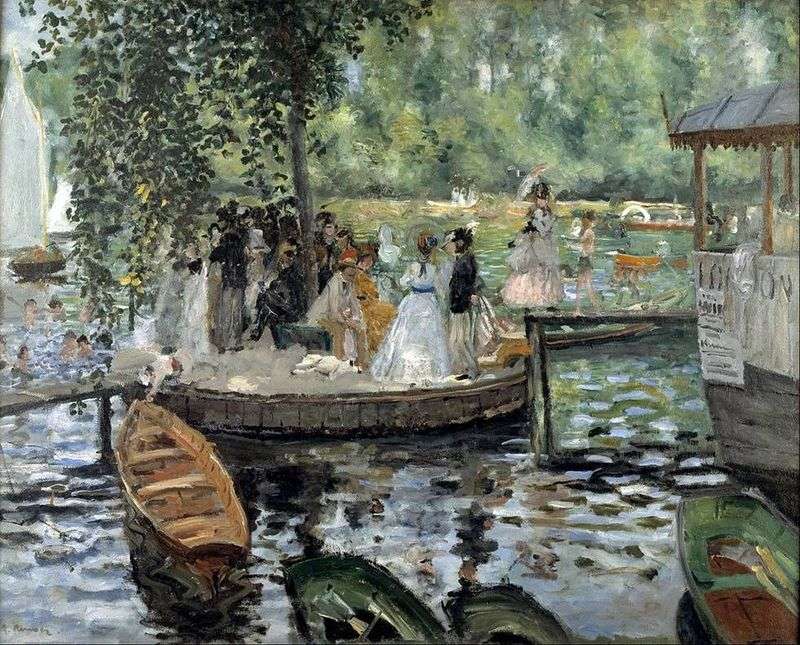 Frogman by Pierre Auguste Renoir
Frogman by Pierre Auguste Renoir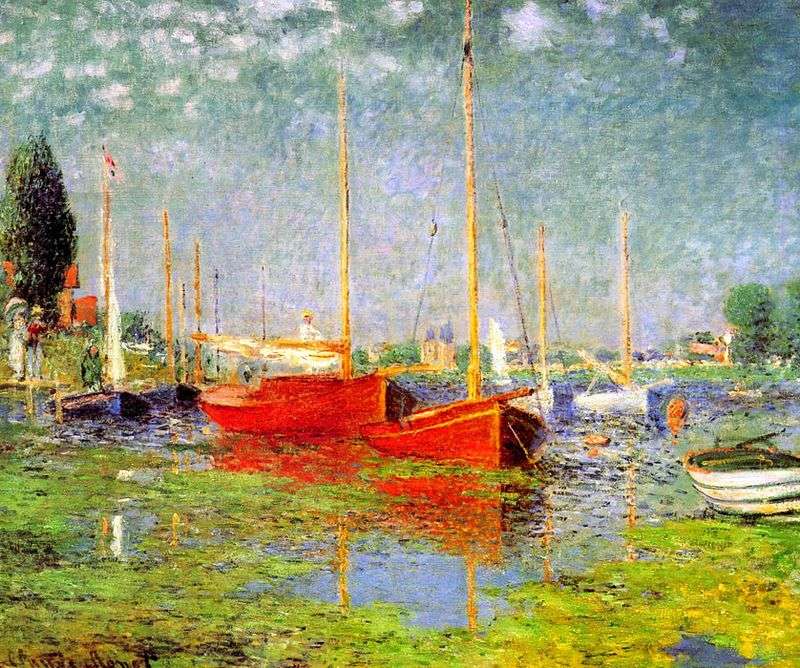 Red boats in Argenteuil by Claude Monet
Red boats in Argenteuil by Claude Monet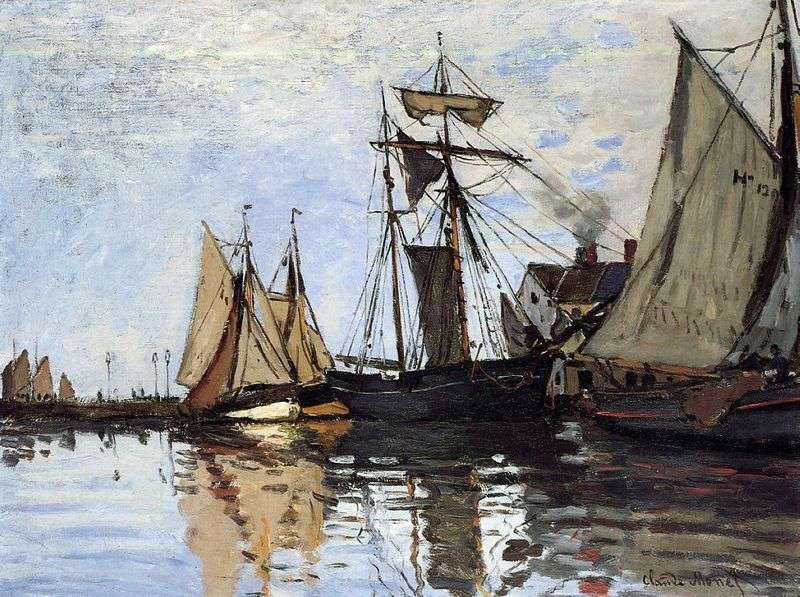 Boats at Port Honfleur by Claude Monet
Boats at Port Honfleur by Claude Monet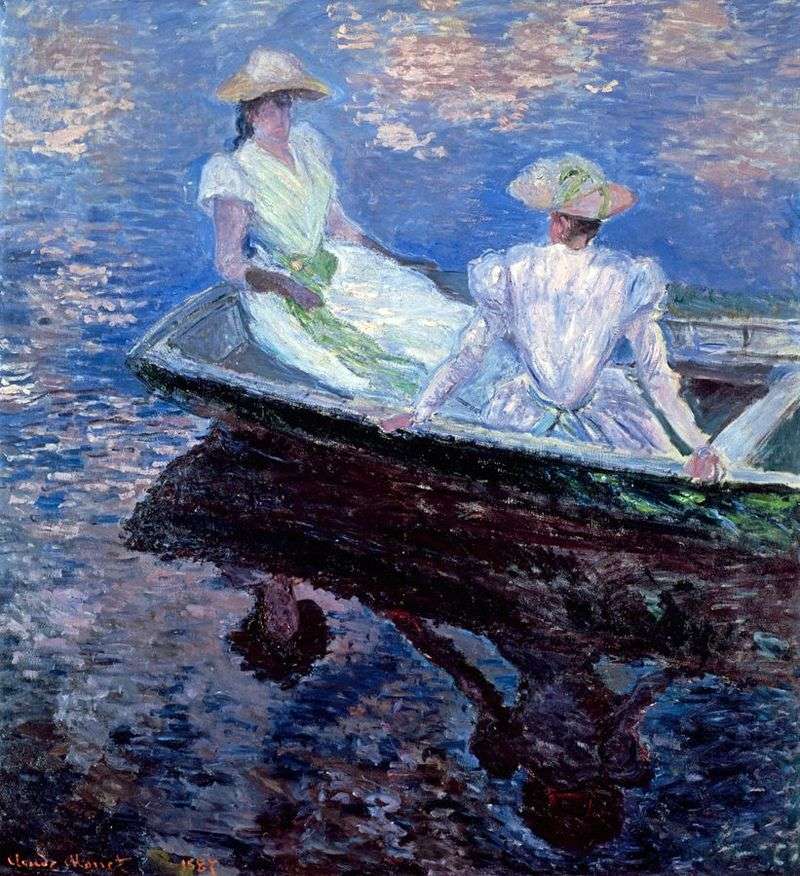 Girls in a Blue Boat by Claude Monet
Girls in a Blue Boat by Claude Monet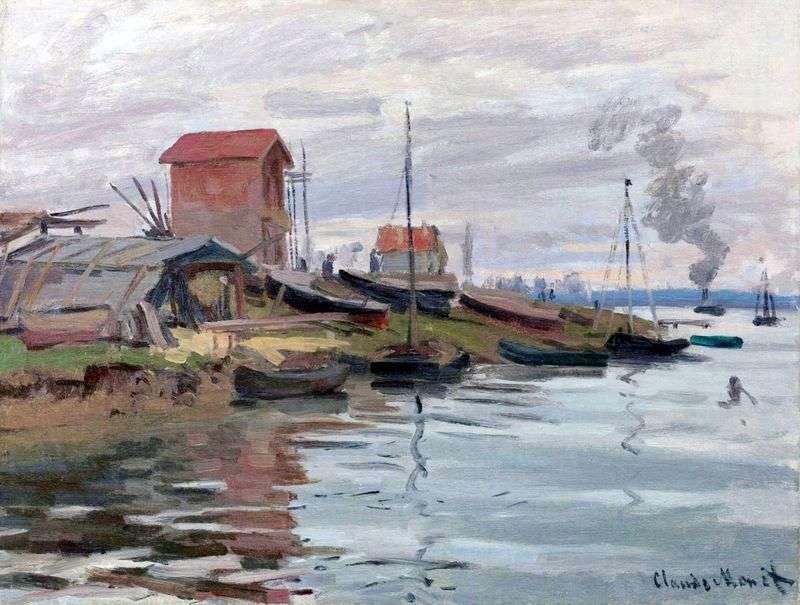 Seine, Petit Genevilliers by Claude Monet
Seine, Petit Genevilliers by Claude Monet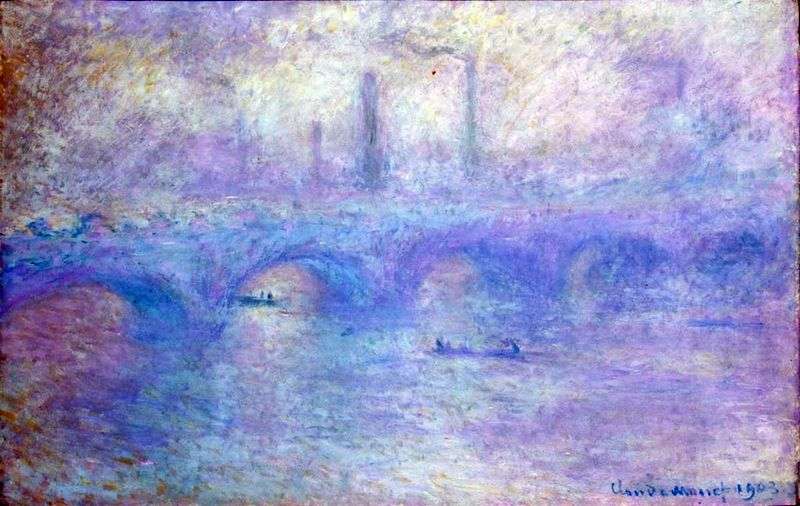 Waterloo Bridge. Fog Effect by Claude Monet
Waterloo Bridge. Fog Effect by Claude Monet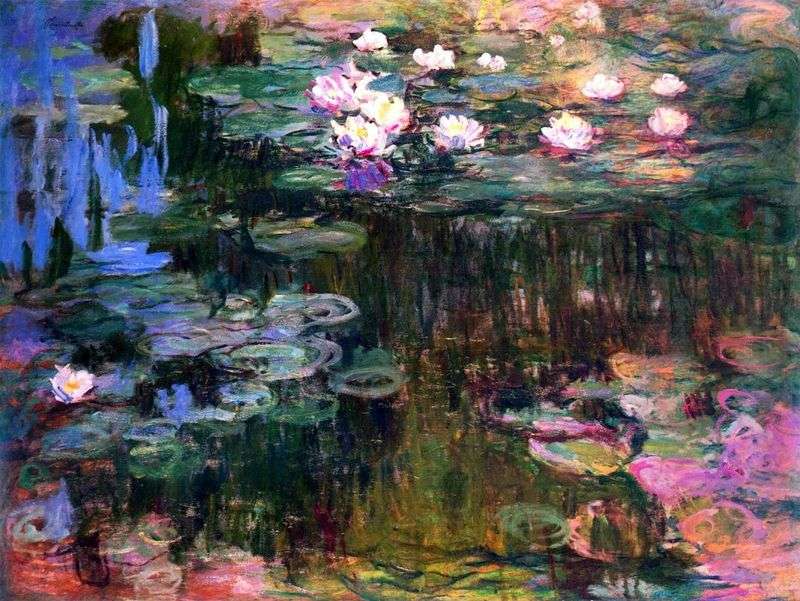 Water Lilies by Claude Monet
Water Lilies by Claude Monet